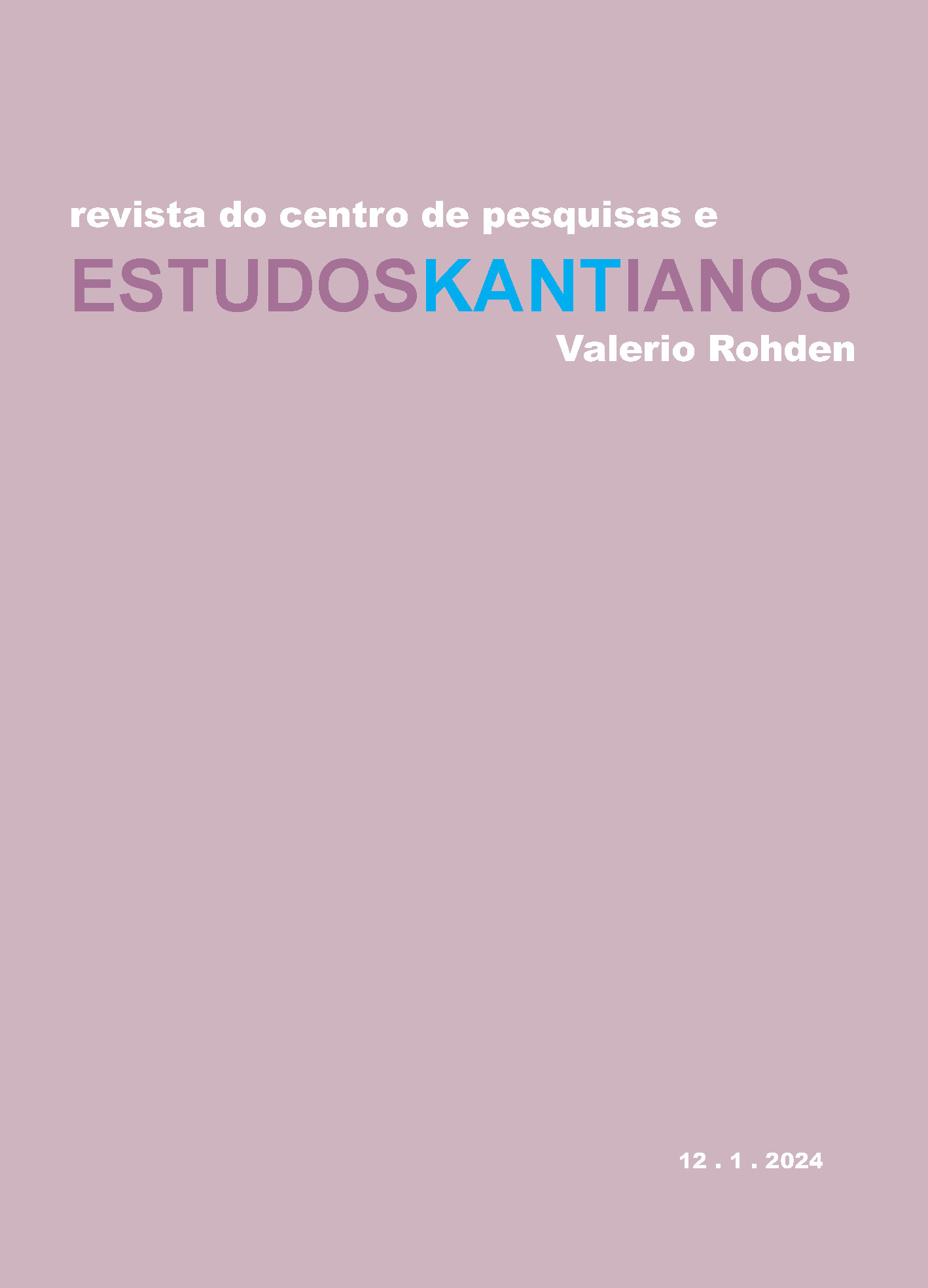Pushing the boundaries: Kant and the indirectcontribution of aesthetic ideas to the broadening ofknowledge
DOI:
https://doi.org/10.36311/2318-0501/2024.v12n1.p135Keywords:
Kant, Limits, Knowledge, Aesthetic Ideas, ArtAbstract
In this work, we intend to demonstrate that the aesthetic ideas, which Kant speaks about in the context of the analysis of the characteristics of beautiful art that he carries out in the Critique of the Faculty of Judgment, collaborate, in some way, in the flexibility of the limits that our capacity to know presents. Although these ideas are intuitive representations that do not have a cognitive function, they nevertheless give rise, in our opinion, to indirect cognitive effects that expand our knowledge in a double sense: on the one hand, they make sensible, in some way, the ideas of the reason for which there is no intuitively given object, and on the other hand, they operate as vehicles of universal communication of internal phenomena, whose constitution as objects of
a possible experience is problematic.
Downloads
Downloads
Published
Issue
Section
License
Copyright (c) 2024 Kantian Studies (EK)

This work is licensed under a Creative Commons Attribution 4.0 International License.
![Estudos Kantianos [EK]](https://revistas.marilia.unesp.br/public/journals/16/pageHeaderLogoImage_pt_BR.png)



